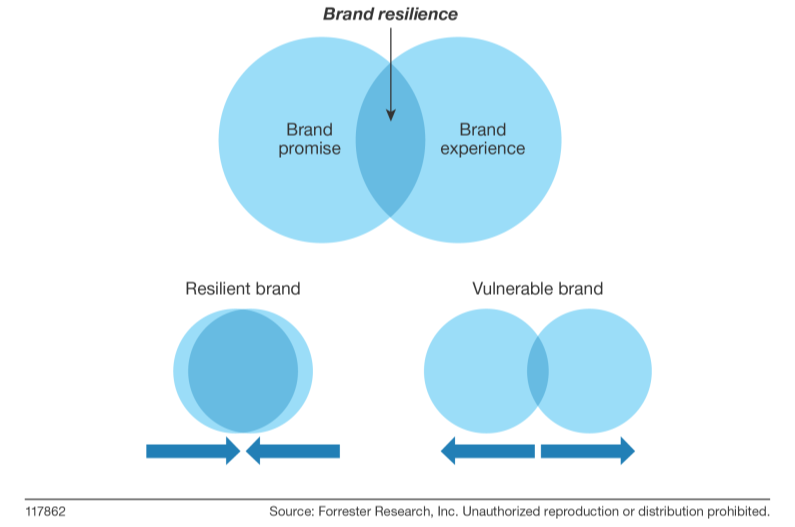Brand Resilience: Risk Pros’ Key Role In Protecting Company Reputation
Risk professionals aren’t prepared for the age of the customer. Empowered consumers and changing market dynamics are upending longstanding business models and lines of operation, but risk professionals largely stand pat, and continue to neglect risks related to their organizations’ most critical asset – company reputation. Yesterday we published a report on "Brand Resilience" that will hopefully help you change that legacy risk mentality.
Corporate Reputation Is Increasingly Valuable…
Companies today rely on their reputation to generate greater portions of their revenue, attract new customers, and retain existing ones. This is why we see:
- Intangible assets now comprise over 87% of the S&P 500’s market value (up from 17% in 1975), and so many tech companies now receive enormous, billion-dollar valuations.
- CVS forego a $2 billion annual business because cigarettes run counter to its core brand values centered on "health" — and the strategy is already beating market estimates!
- Walmart increase employees’ minimum wage because it was an image problem – and companies like RBS, McDonald’s, Costco and others also lead the way.
…And It’s Increasingly Risky
While company reputation is now an incredible business asset, the issue is reputational risk concerns also heighten dramatically as organizations become customer-obsessed. Reputational risk is now more difficult to manage than ever before because:
- Transparency is far greater. Internal emails become major news stories (like one employee email did for Wells Fargo); social media turns your biggest day of business into a PR disaster (like 1-800-Flowers’ Valentine’s Day #fail); and decadeslong partnerships come to abrupt ends (like Lego’s decision to stop making Shell play sets after a Greenpeace campaign).
- Consumer ethical expectations are higher. Customers prefer to do business with responsible companies. When considering decisions to purchase and use brands, products, and services, about half of US online adults feel that it’s important for a brand to have the same values or support the same social causes as them.
- The brand experience is spread across a proliferating set digital touchpoints. Every new online mention of your company – whether it’s on social networks, mobile apps, online marketplaces, forums, or countless other online channels – builds your brand, but conversely, represents even greater risk exposure and greater opportunity for an inconsistent brand experience.
Brand Resilience – The New Strategic Imperative For Risk Pros
Given all of these factors, risk professionals have to get more involved in building resilience into their respective brands and managing all the risk aspects of reputation to better support your marketing and business counterparts. To do this, you have to:
- Find ways to keep the brand experience (i.e., reputation) aligned and consistent with the brand promise and the image marketers’ set (see image below).
- Redesign the way you measure reputational risk as a potential impact of every other risk type.
- Continuously monitor your brand and your external risk environment.
The role risk pros now have in managing company reputation is more than necessary; it's a strategic shift that will help elevate the way risk is used and discussed within the organization, especially at business and leadership levels. This isn’t an easy task. It means redesigning roles and responsibilities, and implementing new process and technology. For more real examples and strategic advice for understanding what this means for your organization and what you can actually do about it, be sure to check out our new report Brand Resilience: Understanding Risk Managers' Key Role In Protecting Company Reputation.
As always, I’d love to hear what you think. Leave a comment below or start a discussion with me on Twitter (@nickhayes10) to keep the conversation going.
